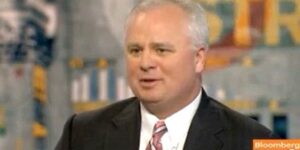
Is Workforce Planning the Secret to Wellbeing and Performance?
In today’s uncertain business and economic environment, employee mental health challenges are on the rise. In response, workforce planning is emerging as a crucial strategy

In today’s uncertain business and economic environment, employee mental health challenges are on the rise. In response, workforce planning is emerging as a crucial strategy

Organizations have long considered employee wellness a priority. But in the wake of the pandemic, it’s more important than ever. Here’s why: 99% of organizations

If a company eliminates applicants because of an unhealthy behavior, are they fostering workplace wellness, or cutting healthcare costs? Are they promoting a culture of

Actions speak louder than words. It’s something we all can agree on. And yet, when it comes to workplace well-being initiatives, few organizations fully realize

Amazon. Netflix. Zappos. Today’s consumer culture is increasingly dominated by brands that thrive on facilitating a personalized experience. So, when it comes to your corporate
I’m going to say it loud and proud: I love workplace wellness programs. And I will shout it from the rooftops until every company in
When corporate wellness works well, it starts from the top-down. Leadership buy-in of corporate wellness programming can make a big difference in the success of
The TalentCulture #TChat Show is back live on Wednesday, November 18, 2015, from 1-2 pm ET (10-11 am PT). Last week we talked about the
I have fond memories of smoking. There’s something about having a cigarette with a cup of coffee that only a smoker or ex-smoker can appreciate.

New research indicates that employees tend to love their employers — but don’t feel it in return. What can we do about that? The #TChat crowd weighs in

How would you describe your ideal employer? Here’s one factor that many job seekers overlook — but it has potential to make all the difference.

How can employers win the hearts and minds of today’s workforce? The TalentCulture community takes a closer look — for better or worse.

Recent headlines suggested that workforce wellness has failed. But “Wellness 2.0” is rewriting that story. What’s new? Read more

We’re excited to transform organizational cultures — hand-in-hand with a dynamic leader in workforce engagement! Learn more about our partnership…